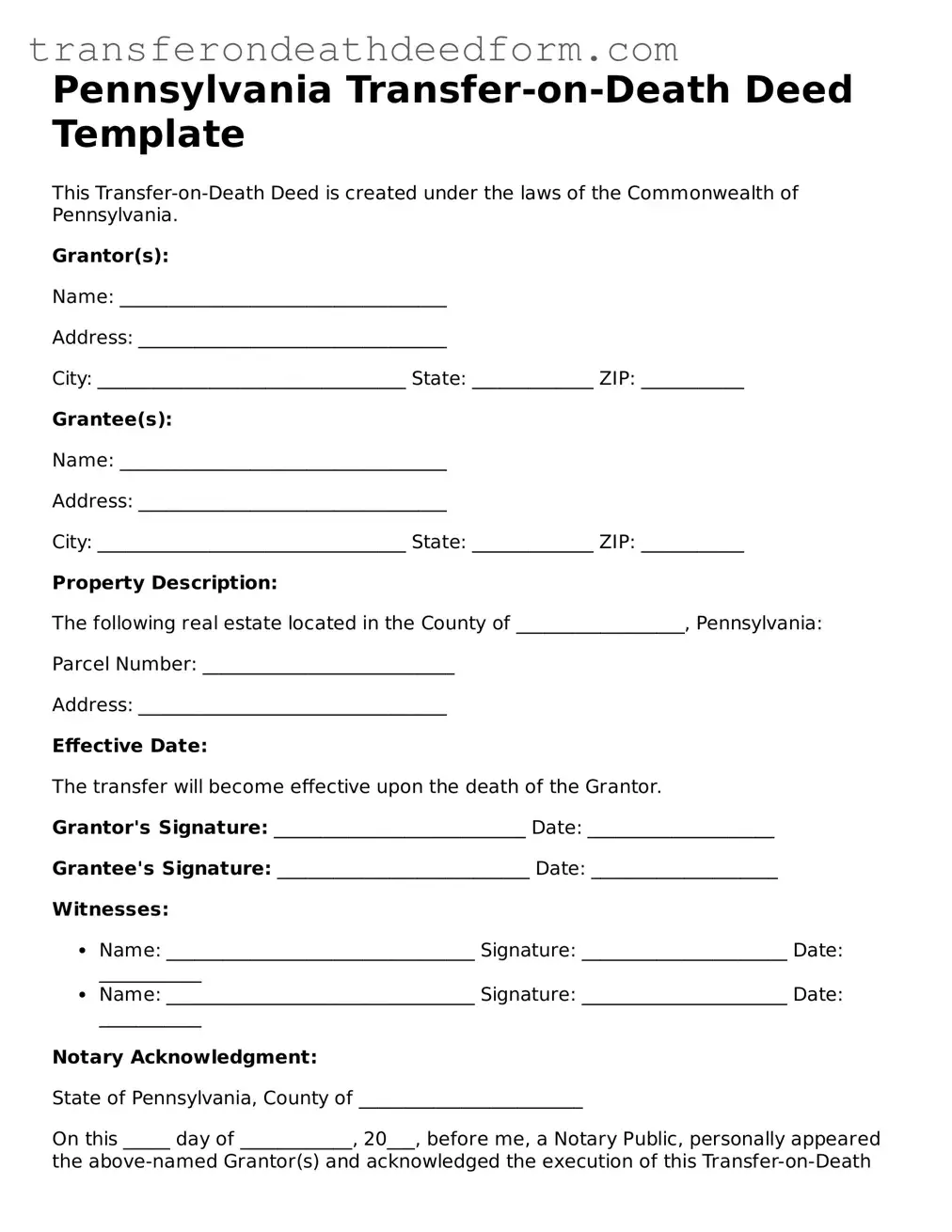Pennsylvania Transfer-on-Death Deed Template
This Transfer-on-Death Deed is created under the laws of the Commonwealth of Pennsylvania.
Grantor(s):
Name: ___________________________________
Address: _________________________________
City: _________________________________ State: _____________ ZIP: ___________
Grantee(s):
Name: ___________________________________
Address: _________________________________
City: _________________________________ State: _____________ ZIP: ___________
Property Description:
The following real estate located in the County of __________________, Pennsylvania:
Parcel Number: ___________________________
Address: _________________________________
Effective Date:
The transfer will become effective upon the death of the Grantor.
Grantor's Signature: ___________________________ Date: ____________________
Grantee's Signature: ___________________________ Date: ____________________
Witnesses:
- Name: _________________________________ Signature: ______________________ Date: ___________
- Name: _________________________________ Signature: ______________________ Date: ___________
Notary Acknowledgment:
State of Pennsylvania, County of ________________________
On this _____ day of ____________, 20___, before me, a Notary Public, personally appeared the above-named Grantor(s) and acknowledged the execution of this Transfer-on-Death Deed.
Notary Public Signature: ___________________________
My commission expires: ___________________________
